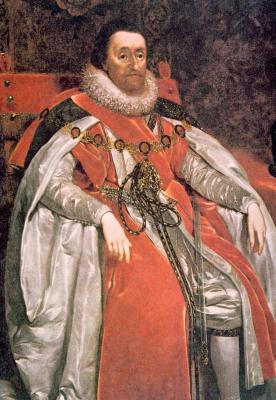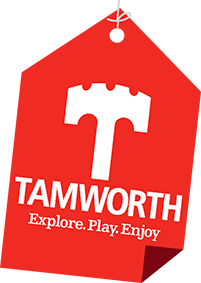Marking 400 years since King's visit to Tamworth Castle

This month Tamworth Castle marked 400 years since welcoming its most prestigious visitor in the form of King James I.
It was on August 18, 1619, that King James I made his first of three known visits to the Castle during his 22-year reign as King of England.
The King seemed to enjoy summer stays at the Castle during his tours of the kingdom as he also stayed in August 1621 and again in August 1624, the year before his death.
At the time, Tamworth Castle was owned by the Ferrers family, who were loyal servants of the crown, and its new Tudor buildings would have comfortably accommodated the King in both privacy and grandeur.
During the historic first visit, the King’s son Prince Charles – who succeeded his father to the throne as King Charles I – stayed at the nearby Moat House in Lichfield Street, which was then owned by William Comberford.
The visits are recorded in the Tamworth Parish Register and also described in the 1873 History of the Town and Castle of Tamworth record by Charles Ferrers Palmer.
It reads: “During the frequent progresses which James I made through the kingdom, in the latter part of his reign, Tamworth was favoured several times with the royal presence.
“On his host, Sir Humphrey Ferrers, the King had previously conferred the honour of knighthood, during his stay at Warwick. But the same distinction was not extended to Mr William Comberford, whose house the Prince made his residence.
“The kind of reception given to the royal visitors has been passed over in silence by historians. Imagination, however, may easily supply the void; and an acquaintance with the festive customs of those times, add the particulars,” Palmer continues.
“The King remained in the town during the whole of the 19th. On the following day, he created Philip Easton a knight, probably just before he quitted the town on his way to Warwick for a second time.
“Two years subsequently, James I paid another visit to Tamworth; whilst Prince Charles remained at Kenilworth. On the 21st of August, 1621, he came to the castle, when he knighted Sir Edmund Windsor. Here he remained until the following morning and then he continued his progress to Warwick again.”
The entry in the record concludes: “The King made a third and final visit to the town in August 1624. On the 19th, he dined at Wichnor in Staffordshire. In the evening on the same day, at the seat of Sir Humphrey Ferrers, he knighted Sir John Skeffington, of Skeffington, in Leicestershire, who was, at the time, High Sheriff of the county of Stafford.”
King James is believed to have stayed in the suite of rooms at the castle now known as the Day Parlour.
Son of Mary Queen of Scots, King James was also King James IV of Scotland, having succeeded to that throne at the age of just 13 months. After creating an alliance with Elizabeth I, he was also crowned King of England on her death in 1603, to create the Kingdom of Great Britain.
Years later, William Comberford of the Moat House would go on to raise a small royalist force and garrison Tamworth Castle for King Charles I during the English Civil War.
The 400-year anniversary is being celebrated with a special event organised by Tamworth & District Civic Society which takes place at the Moat House on Friday evening. The ticket-only event will consist of a buffet reception and audience with ‘King Charles’ under the gold painted decoration of the heraldic ceiling in the Moat House’s Long Gallery.
Cllr Jeremy Oates, Tamworth Borough Council’s Cabinet member for Heritage and Growth, said: “Tamworth Castle has such a long and rich heritage and has played a significant part in the history of the country throughout the centuries. The visit of King James is one of those occasions that has built Tamworth’s fascinating and diverse heritage. To learn more about this, and other interesting facts, I’d encourage people to visit the castle and explore some of the Tamworth story.”
For castle opening and admission times, to book tickets online, and for more historical information, visit www.tamworthcastle.co.uk.





